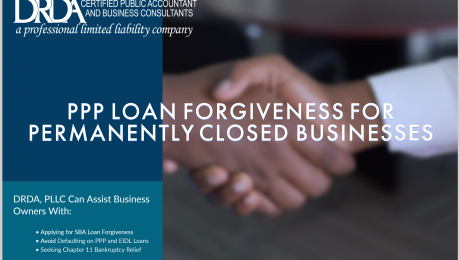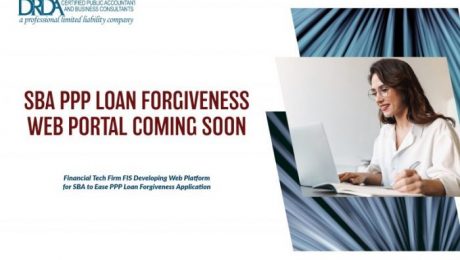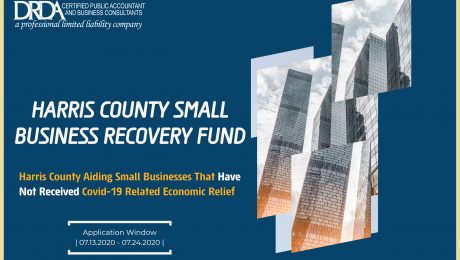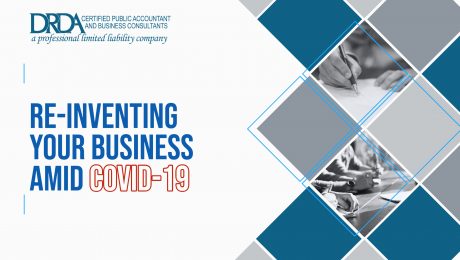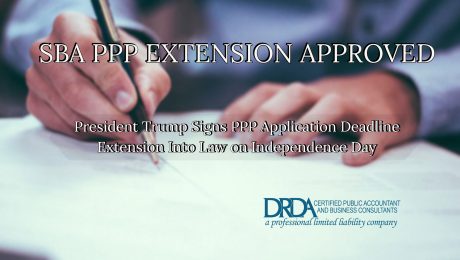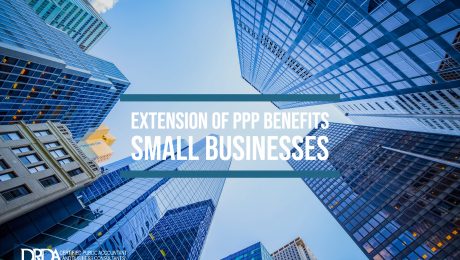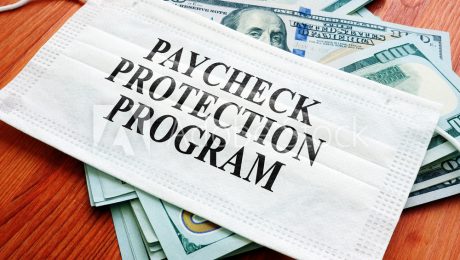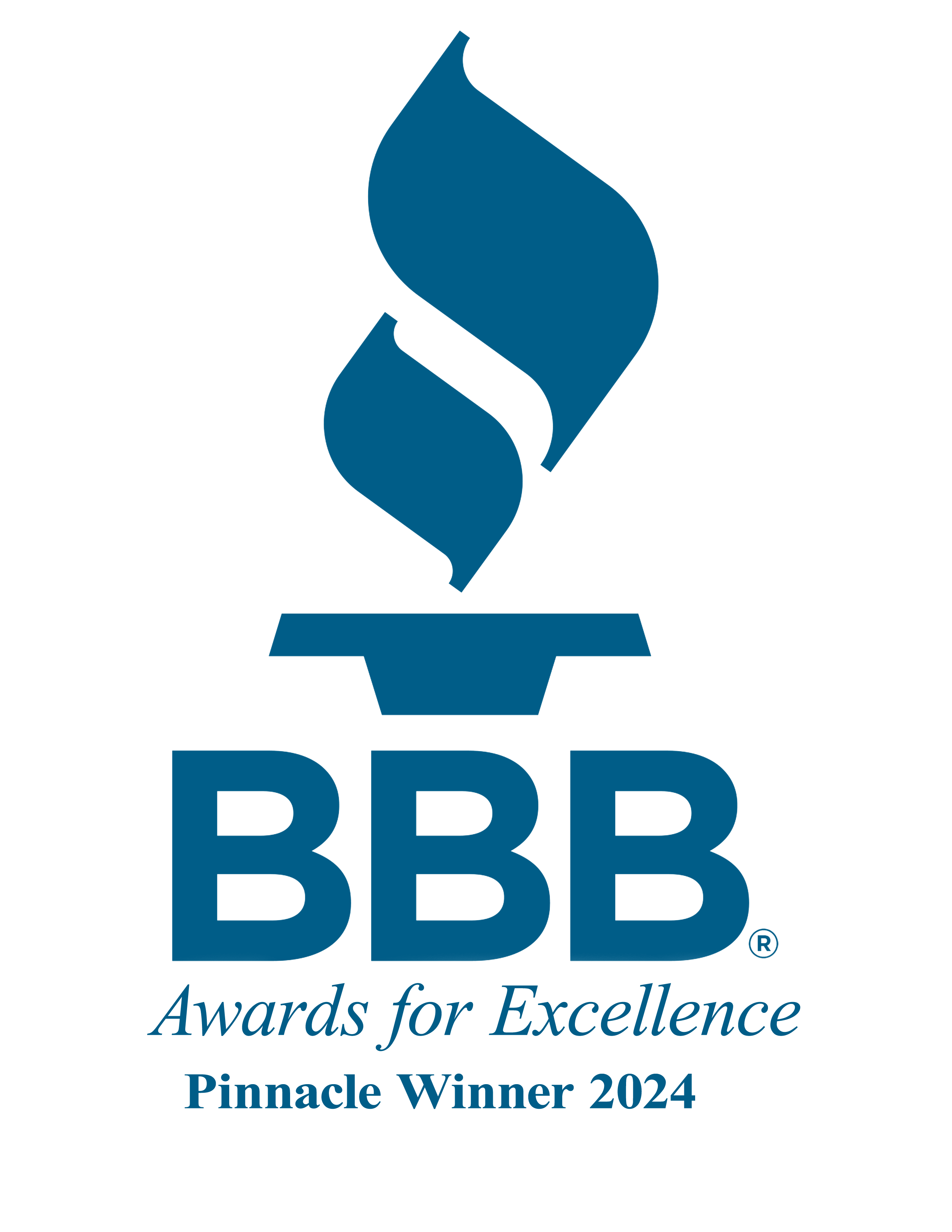PPP LOAN FORGIVENESS FOR BANKRUPT BUSINESSES
Despite the $630 Billion funding provided by the Treasury Department and Small Business Administration (SBA) through the Payroll Protection Program (PPP) to assist small businesses survive during the Covid-19 crisis and subsequently over 170,000 jobs saved, there are almost 140,000 small businesses that still remain closed. Of the closed businesses, approximately 41% will remain that way permanently, according to Yelp’s Economic Impact Report.
LOAN FORGIVENESS
Business owners are now wondering what happens to a small business that received PPP loans if it goes out of business. Loan forgiveness will depend if funds were completely utilized for the purposes of keeping the business open, regardless of amount. The PPP program states that if a PPP beneficiary utilized all funds within the time-frame given them (eight weeks, or twenty-four weeks for those who received an extension thanks to the PPP Flexibility Act), and can demonstrate that 60% of the loan went to payroll, then the PPP loan qualifies to be completely forgiven. However, should the beneficiary not meet the requirements for loan forgiveness, then any amount remaining must be repaid.
Businesses that borrowed PPP and/ or disaster loans of $25,000 or less will generally benefit from more favorable terms from lenders, according to financial experts. In the event of bankruptcy, loans of small amounts can generally be forgiven, provided the borrower acted in good faith (utilized funds as stipulated). However, if small businesses misused its PPP loans and then closed permanently, the SBA and Treasury have made it clear they intend to pursue monies owed.
DON’T DEFAULT
In the unfortunate event the borrower cannot repay the loan and defaults, the consequences will depend on the loan amount borrowed. For example, businesses that borrow PPP and EIDL (Economic Injury and Disaster Loan) funds of $25,000 or less are not required to provide collateral or personal guarantees to the financial institution. As such, lenders usually are not able to seize business or personal assets to cover the loss. This does not mean that the business owner is out of the woods! Keep in mind that PPP and EIDL loans are government loans, thus making the U.S. Government the actual lender. Although personal or business property may not be seized, the federal government can report borrowers who default to all credit bureaus, making it very difficult to obtain future credit. And even if a business (in default) can obtain credit, it will mostly likely come with a high interest rate. Furthermore, the federal government can also seize any income tax refunds or other amounts owed to the borrower.
For business owners that borrowed amounts, specifically EIDL (Economic Injury and Disaster Loan) loans, greater than $25,000 this situation becomes a bit more complex. Should the business close permanently and is not able to repay amounts owed, the SBA can appropriate any assets, including warehouse inventory, receivables, machinery, trucks and other items to cover the borrower’s debts.
In addition, businesses that received EIDL amounts of $200,000 or greater, which requires borrowers to provide personal guarantees before loans are granted, can have even their personal property, including cars, bank accounts, investments and/ or personal tax refunds seized to cover outstanding amounts. “That is a much scarier proposition,” said Paul Becht, CPA, partner at Margolin, Winer & Evens, of personal guarantees required for large EIDL loans.
THE SILVER LINING – CHAPTER 11 BANKRUPTCY TO THE RESCUE
Despite millions of small businesses receiving federal aid to survive the pandemic crisis, many businesses expect to close permanently. “I think this will become one of the biggest issues [for loan recipients],” said Nick Oberheiden, a Dallas-based attorney. “I received the loan, I’m going out of business, now what happens to my loan liability?”
There is, however, a silver lining: rather than defaulting, businesses can seek protection by filing for Chapter 11 Bankruptcy under the Small Business Reorganization Act. Chapter 11 Bankruptcy permits “small businesses a really fast and unbureaucratic reorganization while they’re in bankruptcy protection,” said Mr. Oberheiden. Normally, PPP and EIDL loans can be dismissed in bankruptcy, per Michael Brauneis, managing director of Protiviti, a financial services consulting firm. However, as Sharon King, Executive Director of the Boulder Small Business Development Center points out, “most or all of the loan is likely to be discharged as part of the process (provided) the borrower has acted in good faith.”
The SBA has yet to provide additional instruction pertaining to PPP and EIDL loan forgiveness, particularly for business that closed permanently, or are in bankruptcy protection. Once guidance is provided, borrowers should have a better idea on how their PPP and disaster loans will be handled.
- Published in Uncategorized
SBA TO OFFER NEW PORTAL FOR MAKING PPP LOAN PAYMENTS
With the deadline for applying for a Small Business Administration (SBA)’s Payment Protection Program (PPP) extended, additional businesses are taking advantage of applying for a PPP business loan. Once business have utilized the funds to pay employees and company expenses, borrowers can apply for either loan forgiveness, or if not all the funds were utilized, begin repayment of the remaining portion. To simplify repayment, the Small Business Administration (SBA), in conjunction with the U.S. Treasury Department, plans to release a new online portal to simplify the PPP. FIS (Fidelity National Information Services), a provider of financial technology services to business and communities world-wide, is developing the online. The SBA aims to have the web portal available in August.
Available to all businesses and lenders, the portal will provide an easier method for executing the PPP loan forgiveness procedure from start (application filing) to finish (approval). Financial institutions can set up the FIS Portal quickly, with minimal time consumption. Once setup, lenders can enter data pertaining to borrowers and their corresponding loans, so that pre-filled applications can be provided to borrowers for quick completion and submission. Required documentation proving funds used to cover mortgage payment, utilities, required amount to payroll and other expenses, can be uploaded digitally to the portal as well.
The FIS Portal determines the loan amount that will be forgiven based on the information provided. The results are presented to the lender for review and/ or approval, then to the borrower (and back to lender) for e-signature (electronic signature). Once the application is processed completely, the Portal submits the documents to the SBA for confirmation.
“As a critical infrastructure provider, FIS is focused on making it as easy as possible for small businesses and merchants to complete the loan forgiveness process and help them get back to business as soon as possible,” said Rob Lee, head of Global Core Banking and Channels, FIS. “Our new portal uses advanced automation technology to handle the entire process, reducing the time and complexity for businesses in getting forgiveness of the essential loans that are critical to their business.”
FIS Real-Time Lending previously helped expedite the distribution of SBA PPP Loans through financial institutions to borrowers impacted by the Covid-19 crisis.
- Published in Uncategorized
HARRIS COUNTY OFFERING AID TO SMALL BUSINESSES AFFECTED BY COVID-19
The Harris County Small Business Recovery Fund (SBFR), a $30 million grant program approved on June 30th to aid small businesses that have not received Covid-19 related economic relief, took effect yesterday, Monday, July 13, 2020 at 8am. The SBFR program will run for ten (10) business days. The last day to submit applications will be Friday, July 24, 2020 at 3:30pm.
Funded through Harris County, the SBFR program is designed to help small business owners remain open as Texas continues to fight the coronavirus crisis. Businesses that meet certain criteria will be awarded grants up to $25,000 to assist covering expenses including Payroll, rent, accounts payable, utilities and other operating costs.
“The impact of this crisis on small businesses has been devastating. We can’t afford to lose a source of jobs, innovation and the enterprising spirit our region is known for,” Harris County Judge Lina Hidalgo said. “These grants will help business owners stay afloat as Harris County continues to fight the COVID-19 crisis.”
Eligible businesses that qualify for the Harris County SBRF grants include (but are not limited to):
- Sole Proprietorship
- Partnerships
- Self-Employed Individuals
- Non-Profits
- Independent Contractors
Organizations including gambling, residential builders, speculative real estate investors and sexually oriented businesses are not eligible to apply.
Eligible firms (for and non-profit) must meet the following requirements to qualify for financial relief funds:
- Must have been operating for the entire 2019 calendar year;
- Must have 30 or fewer employees;
- Be in good standing with local, state, and federal governments with no outstanding tax obligations or liabilities;
- Must be located within Harris County. Organizations located within the city of Houston are not eligible for the program unless they are located within Precinct One; and,
- Must prove that the Covid-19 pandemic negatively impacted operations.
Qualifying businesses can apply for SBRF assistance online at www.harriscounty-sbrfund.org. Applicants that cannot apply online may call (713) 845-2476 for information on filing an application by mail or email.
In addition to the application, businesses must also include the following supporting documentation:
- Business tax return for 2018 or 2019
- Income and expenses for 3 months
- Articles of incorporation, business license or DBA certificate
- W-2 statement, pay stubs, or personal tax return.
Businesses approved for SBRF aid will receive 75% of the amount granted within 30 days from the date the program closes (July 22, 2020). To receive the remaining 25% of grant aid, businesses must show proof that it is still operating as of November 30th, 2020.
Organizations that have previously received Covid-19 aid through the SBA’s Payroll Protection Program and other state or local finical relief are also eligible to apply for SBRF relief. However, businesses that have not yet received any assistance from Federal or Local assistance programs are receiving priority.
- Published in Uncategorized
RE-INVENTING YOUR BUSINESS AMID COVID-19
As the Covid-19 Pandemic continues to hit the U.S. economy, businesses are struggling to maintain afloat. As a result, consumers, who are now either unemployed or dealing with cuts in pay are having to reprioritize what goods and services to consume. This has led to a surprise growth in some business sectors, while others continue to deal with dropping demand.
The new challenges posed by the Covid-19 Pandemic are being overcome through the implementation of ingenuity: creating new business strategies. Businesses that are implementing new business models are expected to see increased sales, despite restrictions local authorities have enacted to reduce the spread of the Coronavirus.
There are already several business sectors that are implementing new strategies, including:
- Restaurants :
– If consumers cannot dine at the facility, restaurants are now offering online ordering and delivery service.
– Groceries and paper goods can now be purchased at many restaurants. - Businesses with more than 50 employees (including large, multinational corporations) are enabling their employees to work from home by setting up home offices.
- Furniture stores, seeing an increase in the need for office furniture as more workers are working from home, have increased inventory and are providing quick delivery of office equipment to employees homes.
- Grocery stores have begun offering both curb side pickup and same day delivery of grocery items .
- Telehealth – With the use of a wide variety of modern technology and services, healthcare professionals can now impart non-clinical services, such as provider training, administrative meetings, and continuing medical education, in addition to clinical services, to organizations worldwide.
- Telemedicine –Health care professionals are now utilizing telecommunications (computer or mobile phone) to evaluate, diagnose and treat patients remotely. This trend is quickly becoming part of the new norm in medical care.
Lastly, small businesses should remember to continue implementing that magic ingredient that keeps clients coming back: Good customer service and personal interaction ! Always remember these four steps:
- Put yourself in the place of the consumer: be ready to provide not only great service, but respect any precautions that the client may follow at home.
- Be honest with consumers: Offer solutions to what they truly need.
- Go the extra mile. Understand that we are all in the same boat, trying to get past this pandemic. Clients are feeling what you feel. And,
- Keep in contact with clients (email, social media). Let them know you are there if they need you.
In the wake of these unprecedented times, the world economy is changing the landscape of how we conduct business, and in retrospect, is expected to last beyond the Covid-19 pandemic. Particularly as businesses begin to save on office rental costs, consumers save time by having groceries ready for curb-side pickup, and even virtual doctor visits becoming more common, the full potential offered by digital communication in the form of e-commerce will finally reveal itself.
For additional reading:
- https://colemanreport.com/main-street-monday-the-impact-of-covid-19-on-small-business-retail-opportunities
- https://www.mainstreet.org/blogs/national-main-street-center/2020/07/02/covid-19-and-the-impact-of-retail-part-2?utm_source=July+6%2C+2020%2C+Daily&utm_campaign=061319+Daily&utm_medium=email
- https://www.mainstreet.org/blogs/national-main-street-center/2020/06/30/covid-trends-and-the-impact-on-retail?CommunityKey=c40a84d1-46b2-465c-985c-c08ed69081ab&tab=.
- https://www.sarasotamagazine.com/news-and-profiles/2020/04/these-restaurants-are-selling-pantry-and-grocery-items-take-out-style
- https://chironhealth.com/blog/telemedicine-vs-telehealth-whats-the-difference/#:~:text=Telemedicine%20is%20a%20subset%20of%20telehealth%20that%20refers,clinical%20services%20to%20patients%20without%20an%20in-person%20visit.
- https://chironhealth.com/telemedicine/what-is-telemedicine/
- https://www.msn.com/en-us/money/other/how-to-rethink-your-business-model-post-covid-19/ar-BB14LFnN
- Published in Uncategorized
President Trump Signs PPP Extension, New Deadline August 8th
Small business owners were given an extra reason to celebrate July 4th, as President Trump signed into law an extension of the SBA’s Payment Protection Program into law. Small business owners now have until August 8th to apply for a small business loan to meet employee payroll, rent, utilities, and other expenses. The original deadline to apply for the PPP loan assistance was this past Tuesday, June 30th.
With over $130 Billion left in funds from the approximate $660 Billion approved for small businesses, Congress would have had to reallocate the funds elsewhere had the original application deadline not been extended. Provided small business utilize 60% of the funds to cover employee’s payroll, the loans can be forgiven, essentially becoming a grant.
When Congress reconvenes on July 20th following a two week recess, it must then decide how to allocate the remaining budget before the new filing extension ends on August 8th. The new PPP deadline extension also grants Congress time to draft another, more refined economic relief package aimed at assisting businesses impacted the hardest by the economic crisis as a result of the Coronavirus Pandemic .
Additional Information:
- Sara Hansen, Forbes Magazine : https://www.forbes.com/sites/sarahhansen/2020/07/04/trump-signs-ppp-extension-bill-giving-small-businesses-another-5-weeks/#14e5239e59bf
- Matthew Schwartz, NPR: https://www.npr.org/2020/07/04/887322386/trump-signs-small-business-loan-program-extension
- See above.
- https://www.washingtonpost.com/us-policy/2020/07/06/congress-departed-two-week-recess-without-addressing-coronavirus-spikes-economic-strains/
- Sarah Westwood and Phil Mattingly, CNN Politics: https://www.cnn.com/2020/07/04/politics/trump-ppp-extension/index.html
- Published in Uncategorized
DRDA’s President, Douglas A. Dickey, CPA, CEPA Interviewed in The Houston Business Journal
DRDA’s President, Mr. Douglas A. Dickey, CPA, CEPA, was spotlighted this week in Houston’s news publication “Houston Business Journal.” Mr. Dickey covered the current economic crisis that most small businesses in the U.S. have experienced due to the Covid-19 Pandemic and how the Small Business Administration’s Paycheck Protection Program has currently aided more than 4 million small businesses from closing their doors.
The SBA’s PPP program originally set out for small businesses to utilize loans within an eight week span, the timeframe that the U.S. government officials expected the pandemic t last. However, the pandemic has extended further than anticipated. “This PPP was designed to survive for a 90-day period of time — 60 days of stay-at home, 30 days to ramp back up,” Mr. Dickey said. “That doesn’t seem to be happening, so now what do we do?”
In order to extend economic relief to small business, Congress passed the Paycheck Protection Program Flexibility Act in June. Businesses are now permitted to extend the use of the funds received from extended from eight to 24 weeks, and utilize 40% of the loan to cover non-payroll expenses. This is particularly helpful for business that remain closed. “If your business is completely shut down and you’re not making any money, you’re going to have some rent costs, you’re going to continue to have note payments,” explained Mr. Dickey. “You’ve got ongoing costs, but you’ve got no income coming in.”
- Published in Uncategorized
Great News for Small Businesses – Paycheck Protection Program Extended Until August 8th
Set to expire at midnight on Tuesday, June 30th, the U.S. Senate decided to extend the Small Business Administration’s Paycheck Protection Program for small businesses until August 8th. The program was set to close down Tuesday night with $130 billion in funding left over. The bill has passed the House & Senate, and is awaiting the President’s signature. Small business owners have until August 8th to apply for the program.
The Small Business Administration (SBA), which runs the program with the Treasury Department, was set to stop accepting new applications on Tuesday, June 30th, at 11:59 p.m., Eastern Time. With over $130 Billion left in funds as of Saturday, June 28, the unused portion was set to return to the U.S. Treasury Department, unless Congress allocated the funds elsewhere. Of the $650 billion allocated to help small businesses, just over $520 Billion in loans were approved and issued to nearly 4.9 million small business by Tuesday night, the SBA said.
Sen. Ben Cardin, D-Md., who presented the bill extending the filing deadline, stated “We thought by the end of June that our economy would be on track and we would not need to have additional applications after that date.” The Paycheck Protection Program, referred to as PPP, is designed to offer loans to small businesses to cover expenses, including employee salary during the economic crisis caused by the Covid-19 Pandemic. As Sen. Chris Coons (D-Del.) points out: “There are millions of small business that are barely open now. With the likelihood of either renewed closures or much slower reopening, we have literally millions of small business nationwide at risk.” With the Covid-19 crisis still looming over most of the country, and with fall and winter around the corner (not to mention a heavily active hurricane season forecast), signs of financial stability rebounding to pre-Coronavirus levels by the end of the year remain bleak.
One of the great benefits of the SBA’s Paycheck Protection Program is that the loan amount granted to small business owners to keep their business open and employees from losing their jobs, if utilized according to SBA Guidelines, do not have to be repaid. Hence, the loan converts into a grant. This eases pressure on small business as they struggle to generate revenue to keep afloat. With many small companies struggling to keep open, the government assistance offered via the SBA is a welcomed relief.
For Additional Information, see:
- Published in Uncategorized

